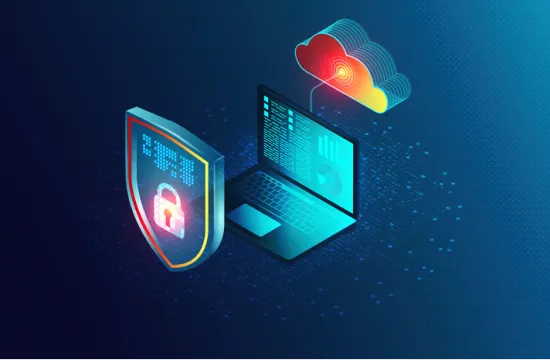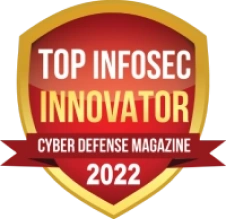Key Examples of EDR Solutions in the Cybersecurity Market
The cybersecurity market is filled with diverse Endpoint Detection and Response (EDR) solutions, each offering unique capabilities to detect, analyze, and respond to threats. Popular examples include Xcitium EDR, Microsoft Defender for Endpoint, and CrowdStrike Falcon. These tools excel in delivering comprehensive visibility, real-time threat analysis, and automated responses across devices and networks. While some EDR solutions focus on seamless integration and scalability, others offer advanced threat intelligence, AI-powered detection, or open-source flexibility. Explore how leading EDR solutions address various security challenges and understand their unique features to identify the best fit for your organization.
How to Choose the Right EDR Solution for Your Organization
Choosing the right Endpoint Detection and Response (EDR) solution is crucial for securing your organization’s digital assets against increasingly sophisticated cyber threats. With many EDR tools available, it’s important to focus on features that align with your specific security needs, budget, and operational requirements. Here’s a detailed guide to help you make an informed decision when selecting the right EDR solution for your organization.
1. Assess Your Security NeedsStart by evaluating your current security posture and identifying gaps in endpoint protection. Consider your organization’s size, network architecture, and the complexity of your digital environment. Are you dealing with a diverse range of endpoints, such as laptops, mobile devices, servers, or IoT devices? Do you need an EDR solution that specializes in detecting specific types of attacks, like ransomware or advanced persistent threats (APTs)? Knowing your security needs will help you prioritize EDR features that are most relevant to your organization.
2. Look for Comprehensive Threat DetectionEffective EDR solutions should offer comprehensive threat detection capabilities, including behavior analysis, machine learning, and anomaly detection. This ensures that the EDR tool can identify both known and emerging threats, such as zero-day exploits and fileless attacks. Advanced EDR solutions use AI-powered algorithms to detect unusual behavior patterns across endpoints, enabling quicker threat identification and minimizing false positives.
3. Prioritize Real-Time Response and AutomationThe ability to respond to threats in real-time is critical. EDR solutions that offer automated responses, such as isolating compromised endpoints, blocking malicious activities, and initiating remediation actions, can significantly reduce the time it takes to contain and mitigate threats. Look for EDR tools that enable security teams to set up custom rules for automated responses based on specific threats. This minimizes human intervention, speeds up response times, and prevents potential breaches from escalating.
4. Evaluate Endpoint Visibility and Centralized ManagementEffective EDR solutions provide deep visibility across all connected endpoints, giving you a comprehensive view of your network’s security status. The best EDR tools offer centralized management consoles that display threat alerts, investigation data, and response actions in a single interface. This streamlined approach simplifies threat monitoring, investigation, and response, making it easier for security teams to manage and prioritize threats without missing critical incidents.
5. Consider Scalability and IntegrationAs your organization grows, so will your security needs. Choose an EDR solution that can scale along with your business, supporting an increasing number of endpoints without compromising performance. Additionally, it’s important to select an EDR tool that integrates seamlessly with your existing security infrastructure, such as SIEM systems, threat intelligence platforms, and firewalls. This ensures a cohesive security ecosystem and allows for more efficient threat detection, analysis, and response.
6. Analyze Ease of Deployment and UseAn EDR solution should be easy to deploy and use, regardless of your organization’s IT expertise. Some EDR tools offer cloud-based deployment, reducing setup complexity and enabling quicker implementation. Look for solutions that provide user-friendly dashboards, customizable alerts, and clear guidance for threat investigation. A solution that requires minimal training and can be effectively used by in-house teams is ideal, especially if your organization lacks dedicated security personnel.
7. Review Cost and Return on InvestmentThe cost of EDR solutions can vary significantly based on features, deployment models, and vendor support. While it’s tempting to choose a cost-effective solution, it’s essential to consider the total return on investment (ROI) in terms of security coverage, reduced threat response time, and overall risk reduction. Some solutions may offer tiered pricing with additional features at higher levels, so be sure to evaluate what’s included in each pricing tier and align it with your organization’s security needs and budget.
8. Assess Vendor Support and ReputationReliable vendor support is a critical factor when choosing an EDR solution. Select a vendor that offers 24/7 support, access to security experts, and regular updates to keep the solution up-to-date against evolving threats. Additionally, consider the vendor’s reputation in the cybersecurity industry. Look for EDR vendors with a proven track record, positive user reviews, and endorsements from reputable cybersecurity organizations.
9. Check for Compliance and Regulatory FeaturesDepending on your industry, your organization may be subject to specific compliance and regulatory requirements, such as GDPR, HIPAA, or PCI-DSS. Ensure that the EDR solution you choose offers compliance support, such as data encryption, audit logs, and compliance reporting. This not only keeps your organization aligned with regulations but also strengthens your overall security posture.
10. Test the Solution with a Proof of Concept (PoC)Before making a final decision, conduct a proof of concept (PoC) to evaluate how the EDR solution performs in your environment. Testing key features such as threat detection, response times, and compatibility with your infrastructure will give you valuable insights into its effectiveness. The PoC phase is also a good opportunity to engage your IT and security teams in assessing user experience, ease of management, and integration with existing tools.
Benefits of Deploying EDR Across Your Network
Deploying Endpoint Detection and Response (EDR) across your network offers a robust layer of cybersecurity, providing protection, visibility, and automated response capabilities to mitigate the risk of cyberattacks. EDR tools are designed to detect both known and unknown threats, making them an essential component of any modern security strategy. Here’s an in-depth look at the key benefits of implementing EDR across your network:
1. Enhanced Threat Detection and PreventionEDR solutions use advanced detection techniques, including machine learning, behavior analytics, and signature-based detection, to identify a wide range of threats. These threats include malware, ransomware, zero-day attacks, and fileless threats. By analyzing activity at the endpoint level, EDR tools can spot unusual behavior, allowing your security teams to proactively block potential attacks before they spread. This real-time detection helps prevent security breaches and keeps your network safe from even the most sophisticated cyberattacks.
2. Comprehensive Visibility Across EndpointsOne of the standout advantages of EDR is its ability to provide comprehensive visibility across all connected endpoints. This visibility extends to desktops, laptops, servers, mobile devices, and IoT devices. EDR continuously monitors endpoint activity, delivering detailed insights into network traffic, user behavior, and potential vulnerabilities. This centralized visibility enables your security team to quickly identify anomalies, track potential threats, and respond effectively to mitigate risk.
3. Accelerated Incident ResponseQuick response to security incidents is critical to minimizing damage. EDR solutions offer automated response capabilities that allow for rapid containment of threats. These automated responses include isolating compromised endpoints, blocking malicious files, and terminating suspicious processes. The ability to respond in real time not only limits the spread of threats but also reduces the time and effort needed for manual intervention, freeing up your security teams to focus on other critical tasks.
4. Reduced Dwell Time for ThreatsDwell time, the period a threat remains undetected within a network, is a major risk factor for data breaches and system compromises. EDR solutions significantly reduce dwell time by continuously monitoring endpoint activity and detecting anomalous behavior as soon as it occurs. By minimizing dwell time, EDR tools help prevent data exfiltration, ransomware encryption, and unauthorized lateral movement across the network.
5. Improved Forensic CapabilitiesEDR solutions offer built-in forensic tools that allow security teams to conduct detailed investigations of incidents. These capabilities include analyzing attack patterns, tracking the source of threats, and identifying potential vulnerabilities. With detailed forensic data available, security teams can understand how an attack occurred, which endpoints were affected, and what actions were taken by malicious actors. This helps in building stronger defenses and preventing similar attacks in the future.
6. Seamless Integration with Existing Security InfrastructureA well-designed EDR solution integrates seamlessly with your existing security infrastructure, such as SIEM systems, firewalls, and threat intelligence platforms. This ensures that all security layers work together cohesively, creating a unified defense strategy. Integration also allows for streamlined workflows, improved data sharing, and better coordination among security tools, enhancing overall threat detection and response efforts.
7. Protection Against Insider ThreatsWhile many security tools focus primarily on external threats, EDR solutions are highly effective in detecting and mitigating insider threats as well. EDR tools monitor user behavior across endpoints, identifying unusual activities that could indicate malicious intent, data theft, or unauthorized access by employees, contractors, or third-party vendors. By protecting against insider threats, EDR adds an extra layer of security to your network, safeguarding sensitive information and proprietary data.
8. Support for Regulatory ComplianceMany industries require organizations to comply with specific cybersecurity regulations, such as GDPR, HIPAA, or PCI-DSS. EDR solutions can help organizations meet these compliance requirements by providing necessary security controls, audit logs, and reporting features. With EDR, you can generate compliance reports that demonstrate adherence to regulations, making audits easier and ensuring that your organization remains compliant with relevant security standards.
9. Scalability for Growing NetworksAs organizations grow, so does the number of endpoints that need to be protected. EDR solutions are built to scale with your network, allowing you to protect more endpoints without compromising performance or security. Whether your network expands due to remote workforces, new offices, or additional IoT devices, EDR can adapt to meet your needs. This scalability ensures consistent protection and performance across all endpoints, no matter the size of your network.
10. Lower Total Cost of Ownership (TCO)By automating threat detection, response, and investigation processes, EDR solutions reduce the resources required for manual security management. This translates to a lower total cost of ownership (TCO) for your organization. With fewer incidents to manage and faster resolution of threats, EDR solutions help minimize downtime, reduce recovery costs, and maintain business continuity. The investment in an EDR solution can lead to significant long-term savings by preventing costly breaches and minimizing the impact of cyberattacks.
11. Boosted Security Team EfficiencyEDR solutions enhance the efficiency of security teams by providing them with advanced tools for detection, analysis, and response. These tools automate many of the time-consuming tasks typically associated with threat management, enabling security teams to focus on more strategic initiatives. EDR solutions also offer detailed threat intelligence and real-time alerts, helping security teams prioritize threats, allocate resources effectively, and improve overall productivity.






